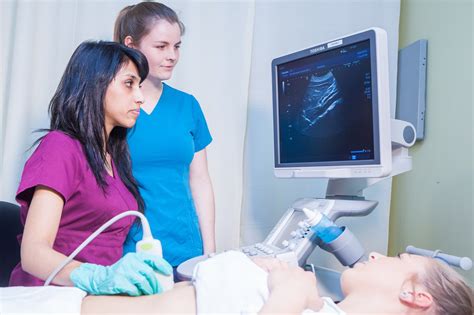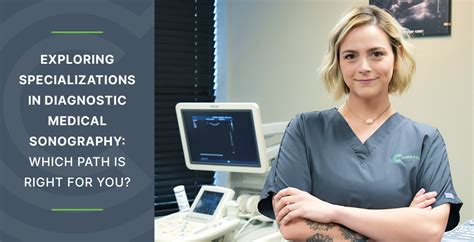Intro
Sonography, also known as ultrasound technology, has become a vital diagnostic tool in the medical field. As a sonographer, you will play a crucial role in helping doctors diagnose and treat various medical conditions. If you are interested in pursuing a career in sonography, here's a comprehensive guide to help you get started.
The demand for sonographers is on the rise, and it's an excellent career choice for those who are passionate about helping others and working in the medical field. According to the Bureau of Labor Statistics, employment of diagnostic medical sonographers is projected to grow 14% from 2020 to 2030, which is faster than the average for all occupations.

To become a sonographer, you will need to complete the following steps:
Step 1: Meet the Basic Requirements
Before you start your journey to becoming a sonographer, you need to meet the basic requirements. These include:
- Earning a high school diploma or equivalent
- Taking courses in science, mathematics, and computer technology
- Having a strong understanding of human anatomy and physiology
- Being able to work well with patients and healthcare professionals
Important Skills for Sonographers
In addition to meeting the basic requirements, sonographers need to possess certain skills, including:
- Strong communication and interpersonal skills
- Ability to work well under pressure
- Attention to detail and accuracy
- Physical stamina to stand for long periods and lift equipment
Step 2: Complete a Sonography Program
To become a sonographer, you will need to complete a sonography program that is accredited by the Commission on Accreditation of Allied Health Education Programs (CAAHEP). These programs are offered at various levels, including:
- Certificate programs: These programs are designed for individuals who already have a degree in a related field and want to specialize in sonography.
- Associate's degree programs: These programs take two years to complete and provide comprehensive training in sonography.
- Bachelor's degree programs: These programs take four years to complete and provide advanced training in sonography.

Step 3: Gain Practical Experience
Practical experience is essential for sonographers. During your sonography program, you will have the opportunity to gain hands-on experience in a clinical setting. This experience will help you develop the skills and confidence you need to succeed in the field.
Clinical Experience Opportunities
Some sonography programs offer clinical experience opportunities in various settings, including:
- Hospitals
- Imaging centers
- Private practices
- Research institutions
Step 4: Obtain Certification
Certification is not mandatory for sonographers, but it is highly recommended. The American Registry for Diagnostic Medical Sonography (ARDMS) offers various certifications for sonographers, including:
- Registered Diagnostic Medical Sonographer (RDMS)
- Registered Cardiac Sonographer (RCS)
- Registered Physician in Vascular Interpretation (RPVI)

Step 5: Maintain Certification
To maintain certification, sonographers need to complete continuing education requirements and adhere to the ARDMS code of ethics.
Continuing Education Requirements
The ARDMS requires sonographers to complete continuing education requirements every two years. These requirements include:
- Completing a minimum of 30 continuing education credits
- Participating in professional development activities
- Staying current with industry developments and advancements
Step 6: Pursue Specialization
Sonographers can pursue specialization in various areas, including:
- Cardiac sonography
- Vascular sonography
- Obstetric and gynecologic sonography
- Pediatric sonography

Step 7: Stay Current with Industry Developments
The field of sonography is constantly evolving, and sonographers need to stay current with industry developments and advancements.
Professional Development Opportunities
Some professional development opportunities for sonographers include:
- Attending conferences and workshops
- Participating in online forums and discussions
- Reading industry publications and journals
By following these steps, you can become a qualified sonographer and pursue a rewarding career in the medical field.
What is sonography?
+Sonography, also known as ultrasound technology, is a diagnostic medical imaging technique that uses high-frequency sound waves to produce images of the body's internal structures.
What are the benefits of becoming a sonographer?
+The benefits of becoming a sonographer include a rewarding career in the medical field, opportunities for specialization, and a competitive salary range.
What is the job outlook for sonographers?
+The job outlook for sonographers is excellent, with employment projected to grow 14% from 2020 to 2030, which is faster than the average for all occupations.
Now that you have a comprehensive guide to becoming a sonographer, take the first step towards a rewarding career in the medical field. Share your thoughts and experiences in the comments section below, and don't forget to share this article with your friends and family who may be interested in pursuing a career in sonography.
